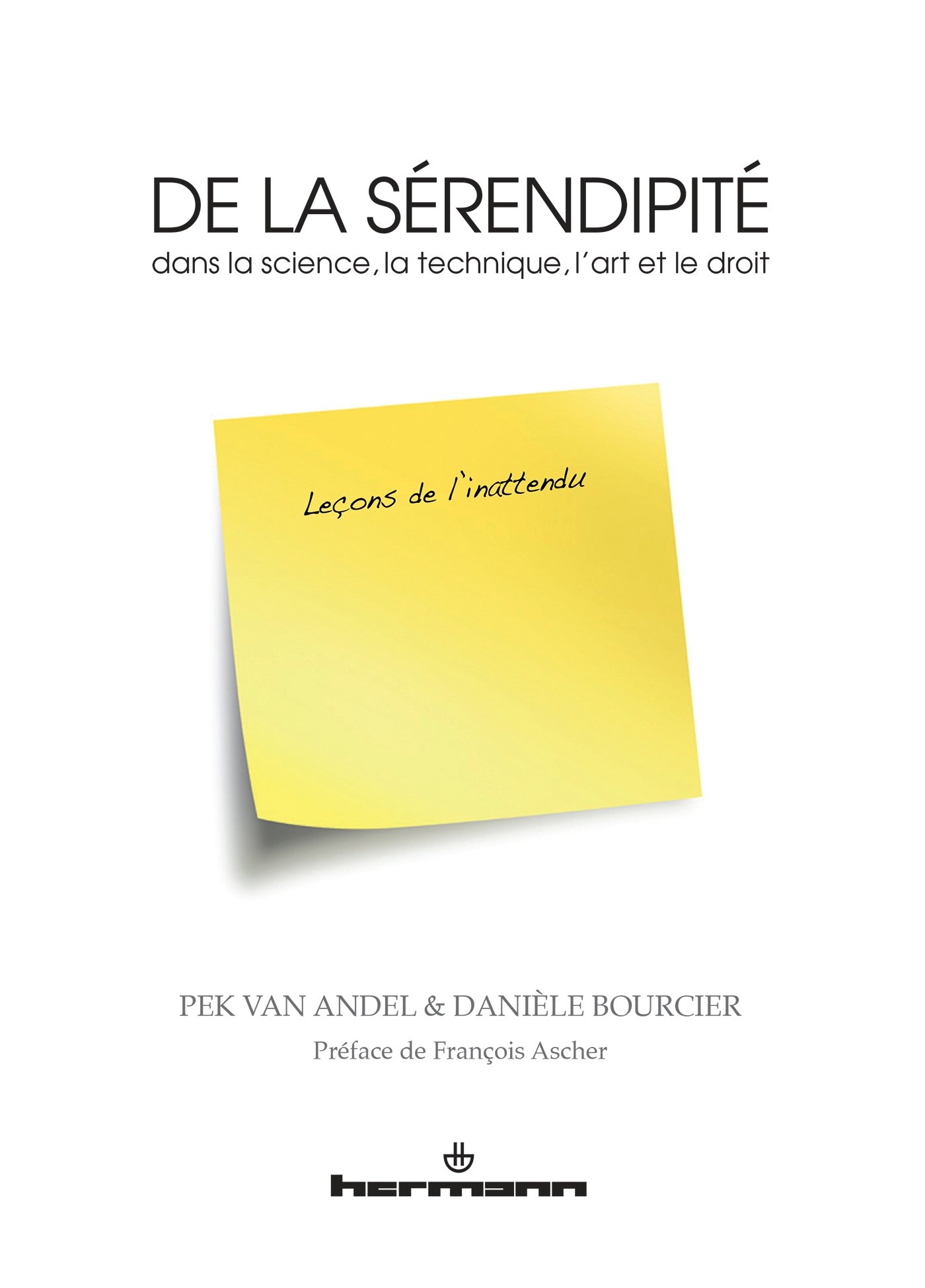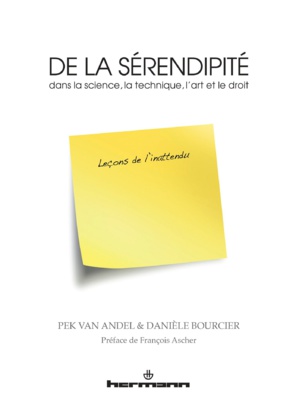The notion of serendipity hence combines chance, that is, the circumstances, with a bright and astute spirit. It relies on the ability to exhibit an “intuitive flash” based on a new, unexpected event, and that is rooted in the empirical setting in which it occurs. The concept of serendipity aims at accounting for both unexpected, counter to forecast and essential historical discoveries, for instance those with major social significance that can put into question the dominant tenet of the era as far as knowledge is concerned. One example that can illustrate the concept of serendipity is that of the nuclear fission by Otto Hahn and Fritz Strassmann (Roberts, 1989). The discovery of unsought outcomes can be in contradiction to current knowledge. However, far from acting as a brake to knowledge development, these unexpected discoveries can raise researchers’ curiosity. They foster them to use their imagination by seeking significance in what they observe aside from already tested models. This can in turn lead researchers to generate new hypotheses, build new theories or widen existing ones’ scope.
Serendipity was first associated to pure science as it was at the very centre of numerous, as important as disparate inventions such as radioactivity, penicillin or Velcro, among others. Yet non-scientific examples are numerous. One can cite the creation of Cognac due to the forgetting of an unsold stock because of on-going war or the creation of a new economic model: Facebook, that had initially been intended to help building a student directory. Serendipity is thus a state of mind that consists in finding a singular, pioneering outcome not sought for and taking advantage of it by reorienting one’s original objectives, in order to renew a knowledge field. As a reminder, the use of the word serendipity in social sciences is widely attributed to sociologist Robert K. Merton (1949), who defined it as the ability to generate unexpected, aberrant and crucial outcomes, which make this type of discoveries both surprising and interesting.
Serendipity was first associated to pure science as it was at the very centre of numerous, as important as disparate inventions such as radioactivity, penicillin or Velcro, among others. Yet non-scientific examples are numerous. One can cite the creation of Cognac due to the forgetting of an unsold stock because of on-going war or the creation of a new economic model: Facebook, that had initially been intended to help building a student directory. Serendipity is thus a state of mind that consists in finding a singular, pioneering outcome not sought for and taking advantage of it by reorienting one’s original objectives, in order to renew a knowledge field. As a reminder, the use of the word serendipity in social sciences is widely attributed to sociologist Robert K. Merton (1949), who defined it as the ability to generate unexpected, aberrant and crucial outcomes, which make this type of discoveries both surprising and interesting.
While serendipity is associated to chance, it cannot be reduced to this sole dimension. Should the event, the accident linked to chance, constitute a decisive crystallisation point, converting this chance into a discovery necessitates a transformation process initiated by a person, a researcher, an entrepreneur, a leader, whose unique characteristics and path lead do this achievement. This mix of chance and transformation can be better understood through the concepts of “accidental sagacity” and “intuitive flash” (Merton et Barber, 2004).
Accidental sagacity consists in the ability to shift from the logic of resistance, be it active or passive, or even resilience (openness and acceptance) to a pro-active attitude, whereby the “accident” is not a constraint nor an obstacle or a threat anymore. It becomes an input that serves a strategy of action and that is to be integrated as a driving force. Accidental sagacity thus goes beyond resilience. It aims at organising the available resources differently in order to articulate “what used to be”: fundamentals, beliefs, values, attitudes and behaviours, with “what is”: the new situation after the accident, in a ordered and coherent manner. Accidental sagacity is thus all in one: it is a posture that refuses both gain-oriented, primary opportunism and disjunctive thought that would oppose strategy, intentionality, to environment constraints, opportunities and threats. It is, on the opposite, a posture of integration and reconciliation of all the internal and external forces, either positive or negative, intelligible or irrational, active and reactive (harmonisation of forces) within a dynamic whole that serves a mission, a vision that raises the individual and his or her creative project. It is within this new mental and psychological set of mind towards understanding and thinking the world (accidental sagacity) that an “intuitive flash” can emerge.
The intuitive flash is what is to create a both destructive and federative movement, whereby the novelty, the emergent, combines with the inherent identity and qualities of the individual. When the unexpected, the aberrant finds an intimate and personal resonance with the individual self, either a researcher, an entrepreneur, a manager or a leader, it produces both scientific, economic, social or societal value and sense in the form of a proximity with the individual’s deep values and his or her personal quest. From then on, this both original and consistent movement, that is in line with what the individual really is, can transform a disruptive, potentially threatening or even destructive event, for instance scientific results incoherent with the up-to-now known/accepted corpus, economic, health, social crisis/military conflict, into a creative opportunity that may allow the individual to change the rules of the game to his or her advantage, be the game either scientific, institutional or economic. The intuitive flash is hence the achievement of a movement centred around the development of new abilities, with new perspectives, a new vision, and new paths, new orientations offered to the actor, be he or she an entrepreneur, a researcher or a leader.
Accidental sagacity consists in the ability to shift from the logic of resistance, be it active or passive, or even resilience (openness and acceptance) to a pro-active attitude, whereby the “accident” is not a constraint nor an obstacle or a threat anymore. It becomes an input that serves a strategy of action and that is to be integrated as a driving force. Accidental sagacity thus goes beyond resilience. It aims at organising the available resources differently in order to articulate “what used to be”: fundamentals, beliefs, values, attitudes and behaviours, with “what is”: the new situation after the accident, in a ordered and coherent manner. Accidental sagacity is thus all in one: it is a posture that refuses both gain-oriented, primary opportunism and disjunctive thought that would oppose strategy, intentionality, to environment constraints, opportunities and threats. It is, on the opposite, a posture of integration and reconciliation of all the internal and external forces, either positive or negative, intelligible or irrational, active and reactive (harmonisation of forces) within a dynamic whole that serves a mission, a vision that raises the individual and his or her creative project. It is within this new mental and psychological set of mind towards understanding and thinking the world (accidental sagacity) that an “intuitive flash” can emerge.
The intuitive flash is what is to create a both destructive and federative movement, whereby the novelty, the emergent, combines with the inherent identity and qualities of the individual. When the unexpected, the aberrant finds an intimate and personal resonance with the individual self, either a researcher, an entrepreneur, a manager or a leader, it produces both scientific, economic, social or societal value and sense in the form of a proximity with the individual’s deep values and his or her personal quest. From then on, this both original and consistent movement, that is in line with what the individual really is, can transform a disruptive, potentially threatening or even destructive event, for instance scientific results incoherent with the up-to-now known/accepted corpus, economic, health, social crisis/military conflict, into a creative opportunity that may allow the individual to change the rules of the game to his or her advantage, be the game either scientific, institutional or economic. The intuitive flash is hence the achievement of a movement centred around the development of new abilities, with new perspectives, a new vision, and new paths, new orientations offered to the actor, be he or she an entrepreneur, a researcher or a leader.
Extract from the MSMEs Report (Meier, Schier, 2020)
Olivier Meier
Full Professor
University of Paris Est (LIPHA)
----------------------------------
Olivier Meier is Professor of Universities, HDR of exceptional class, Director of the ASAP Observatory “Social Action and Public Action” – chair “Public Innovation” in collaboration with Sciences Po and Polytechnique. He is responsible for Master 2 and Bachelor's degree programs and teaches strategy and management at the University of Paris Est, Paris Dauphine and Sciences Po Paris. Research Director at LIPHA Paris Est, he is a Visiting Professor at the European Center of Harvard Business School and an associate researcher at the ESSEC Chair on managerial innovation and operational excellence. He is also a member of the scientific committee of the Prevention of risks & Performance Chair at CentraleSupelec. His research work focuses on corporate strategies, intercultural management and the contribution of sociology to the analysis of innovation processes.
He is the author of some sixty articles and thirty books on management. He has received several scientific awards, including the Best Paper Award from the Fondation Paris Dauphine (Cercle de l’innovation) and the Best Article Award published in the Family Business Review for his study entitled “The early succession stage of a family firm: exploring the role of agency rationales and stewardship attitudes”, awarded by the Family Firm Institute in Chicago (USA). He is an elected member of the National Council of Universities (2 mandates) and was appointed “Expert HCERES” to the High Council for the Evaluation of Education and Research. He also holds decision-making positions in several university bodies (UFR Management Board, Scientific Committee, Departmental Council, Statutes Commission, etc.) and was a project manager for the Presidency of the Université Paris Est.
Olivier MEIER is also Director of collections at Management & Société.
Full Professor
University of Paris Est (LIPHA)
----------------------------------
Olivier Meier is Professor of Universities, HDR of exceptional class, Director of the ASAP Observatory “Social Action and Public Action” – chair “Public Innovation” in collaboration with Sciences Po and Polytechnique. He is responsible for Master 2 and Bachelor's degree programs and teaches strategy and management at the University of Paris Est, Paris Dauphine and Sciences Po Paris. Research Director at LIPHA Paris Est, he is a Visiting Professor at the European Center of Harvard Business School and an associate researcher at the ESSEC Chair on managerial innovation and operational excellence. He is also a member of the scientific committee of the Prevention of risks & Performance Chair at CentraleSupelec. His research work focuses on corporate strategies, intercultural management and the contribution of sociology to the analysis of innovation processes.
He is the author of some sixty articles and thirty books on management. He has received several scientific awards, including the Best Paper Award from the Fondation Paris Dauphine (Cercle de l’innovation) and the Best Article Award published in the Family Business Review for his study entitled “The early succession stage of a family firm: exploring the role of agency rationales and stewardship attitudes”, awarded by the Family Firm Institute in Chicago (USA). He is an elected member of the National Council of Universities (2 mandates) and was appointed “Expert HCERES” to the High Council for the Evaluation of Education and Research. He also holds decision-making positions in several university bodies (UFR Management Board, Scientific Committee, Departmental Council, Statutes Commission, etc.) and was a project manager for the Presidency of the Université Paris Est.
Olivier MEIER is also Director of collections at Management & Société.






